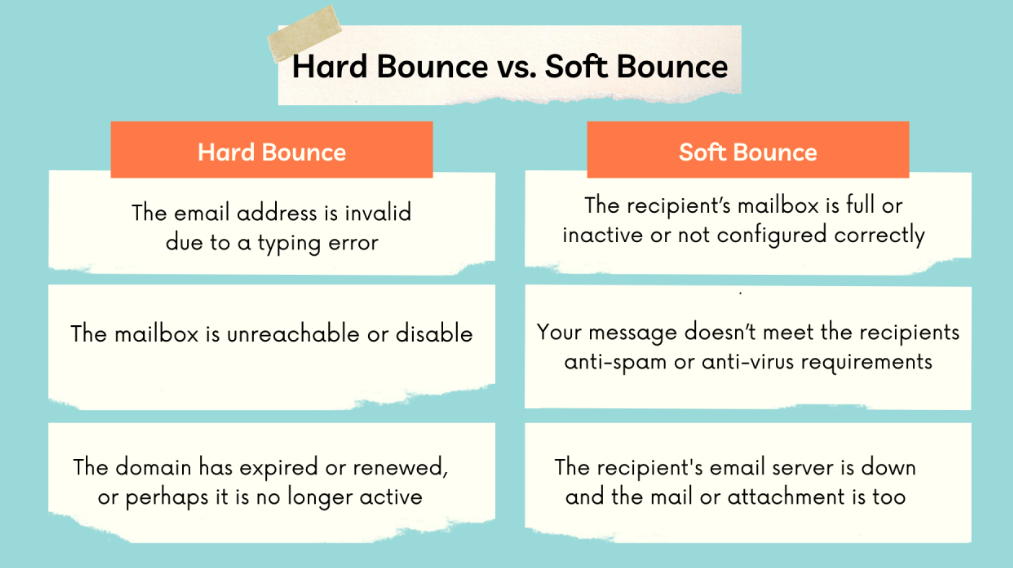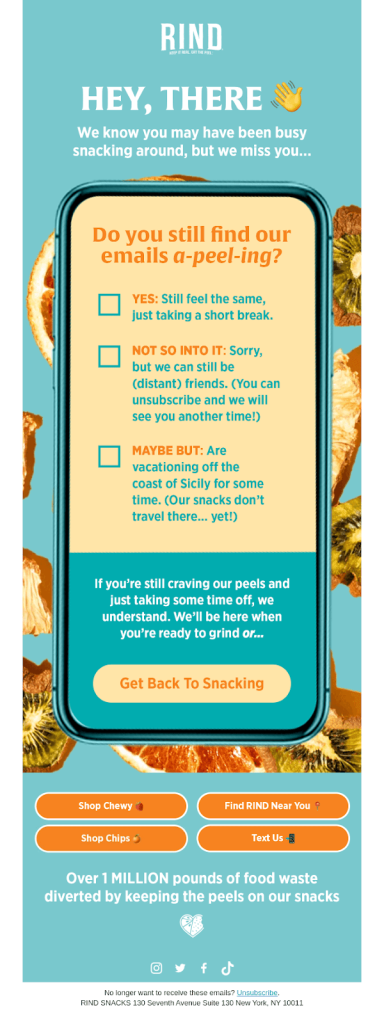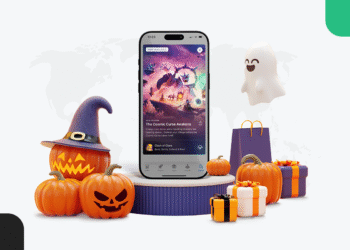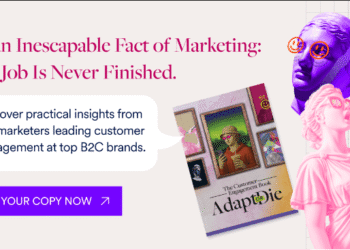
Small business owners and marketers wear multiple hats. Managing day-to-day operations, allocating budgets, looking for growth hacks. On top of that, they’re expected to track performance and figure out what’s actually working.
But according to a recent study, understanding what’s driving results remains a top challenge for most SMBs. The same study reveals that 39% of SMBs trust email as a marketing channel to reach their audiences. Which brings the question: how can you tell if your small business email marketing is truly paying off? It all comes down to tracking the right email KPIs.
Below you’ll find the key email metrics, along with formulas to calculate them. And even if you see some of your numbers dropping, we’ve included five strategies to turn things around.
But before exploring what to monitor, let’s explore the how.
How can you track email KPIs?
Having the right email KPIs isn’t enough. The amount of data may feel overwhelming, and small business owners usually lack the time or expertise to dive deep into detailed analytics.
Luckily there are email marketing tools for small businesses that do the job for you. They are designed to turn complex data into easy-to-grasp, visual representations. You monitor campaign performance by checking intuitive dashboards and straightforward reports. Also, some of these platforms make campaign comparison a breeze through side-by-side pie charts.
Platforms like Moosend, Constant Contact, or Mailchimp offer tools to easily track email engagement metrics that matter to your business. And we don’t just mean open rates, conversions, or click-throughs:
- Moosend’s robust reporting includes website tracking, real-time click maps, and geolocation insights
- Constant Contact offers a dedicated app to check reports on the go
- Mailchimp gives users options like a 24-hour performance snapshot and comparative reports
On top of that, these tools come with excellent email deliverability records. And they all offer audience management features so you can keep a clean and organized small business email list. No need to worry about email compliance either since they ensure to meet email legislations standards.
What falls on you is to track how your campaigns perform and follow the right practices to optimize them. Let’s see how you can do that.
8 Email KPIs to monitor your email campaign performance
There isn’t a one-size-fits-all approach to measuring email performance. And no single email engagement metric will tell you the full story. Therefore, you should identify the benchmarks that matter the most to your goals. Then, combine them to understand the impact of your small business email marketing.
Here are the most common email KPIs to track:
1. Open rate
What it measures:
The percentage of emails opened by subscribers out of the total number of emails delivered. It’s a good indicator of how enticing your subject lines and preview texts are.
Formula:
(Emails opened ÷ emails delivered) × 100
Why it matters:
An opened email is the first step toward engagement. High open rates typically suggest strong subject lines.
However, this metric isn’t that valuable on its own. Due to Apple’s Mail Privacy Protection, senders have trouble tracking email open rates for Apple device users. That’s why it’s essential to combine it with other key metrics like click-throughs and conversions.
2. Click-through rate (CTR)
What it measures:
The number of subscribers who clicked on a link in your email. A high click-through rate indicates that readers find your content engaging.
Formula:
(Clicks ÷ emails delivered) × 100
Why it matters:
CTR is a useful email KPI indicating that your content resonates with your audience. It also means that your email copy and design make your core message stand out, guiding subscribers towards your call-to-action.
3. Conversion rate
What it measures:
The percentage of subscribers who clicked one of your links and completed the desired action. It represents the goal of your email, such as watching a YouTube video or subscribing to a webinar.
Formula:
(Conversions ÷ clicks) × 100
Why it matters:
This is your bottom-line metric. It tells you whether your email achieved its goal and turned interest into action. You could also track conversions from all the emails you sent, whether they were opened or not.
4. Bounce rate
What it measures:
The percentage of emails that failed to reach inboxes. Bounces are either soft (temporary issues) or hard (permanent problems like invalid addresses). More specifically:

Formula:
(Emails bounced ÷ emails sent) × 100
Why it matters:
Soft bounces are usually minor, but repeated soft or hard bounces could indicate list quality issues. Keeping an eye on bounce rates helps you maintain a healthy list and your email deliverability high.
5. Unsubscribe rate
What it measures:
The number of recipients who choose to opt out from your campaigns. This action may show that something’s off with your email content or frequency.
Formula:
(Unsubscribes ÷ emails delivered) × 100
Why it matters:
A few unsubscribes are normal. But a high rate could signal issues with your content, frequency, or targeting. Use it as a cue to adjust and re-engage your audience.
6. Spam complaint rate
What it measures:
The percentage of subscribers who mark your email as spam. A spike in this email metric could reveal that some readers find your emails irrelevant or even annoying.
Formula:
(Complaints ÷ emails sent) × 100
Why it matters:
Spam complaints are important because they impact your email deliverability and sender reputation. If you see them rising, you might need to evaluate things like your sending or lead generation practices and your email content’s relevancy or quality.
7. List growth rate
What it measures:
How quickly your email list is growing (or shrinking) over time. A list that’s expanding is a sign that your lead generation practices work and you’re reaching out to new audiences.
Formula:
((New subscribers – unsubscribes) ÷ total subscribers at start of period) × 100
Why it matters:
A healthy list growth rate signals effective lead generation and continued interest in your brand. A stagnant or shrinking list may require revisiting your acquisition channels or content strategy.
8. Revenue per subscriber
What it measures:
Each subscriber’s contribution to your business revenue. Basically, it helps you assess each subscriber’s value over a specific period of time.
Formula:
Revenue generated ÷ subscribers
Why it matters:
By understanding the value of each recipient, you can tell whether your campaigns are delivering ROI. It’s also useful for segmentation and prioritizing high-value audiences.
5 Practical tips to refine your email marketing as a small business
With the right strategies in place, you can make your small business email marketing more effective. Here’s how:
1. Write clear and personalized subject lines
Personalized subject lines help your message stand out.
Make sure that your subject line clearly reflects the email content, too. A misleading subject line will probably lead to mistrust. Let’s say a travel agency promises “dream destinations picked for you” in the subject line. The email should deliver a tailored list of suggestions that match their travel or search history.
Also, use concise and clear language: “Your new running gear ships tomorrow” outperforms “Don’t miss this update”.
And let’s not forget the preview text. This valuable asset serves as a companion to your subject line, further explaining the email’s purpose. To make this email tactic work, avoid repeating the subject line’s message in your preview text. Instead, ensure it adds value, so both elements clearly communicate why the recipient should open the email.
Now let’s check an email subject line that ticks the boxes:
Subject line: New: AI agents are here. Make your Zaps smarter.

Zapier uses a straightforward subject line that clearly communicates what’s inside the email. The recipient knows beforehand that they’ll read all about the new feature and its key benefits.
2. Focus on content relevancy and quality
Each time you create an email campaign, ask yourself: “How can this message help my audience?” Everything in your email should aim to benefit your subscribers in some way.
To improve your email content (alongside with your CTR and conversion rate), make sure you:
- Invest in clean email design without unnecessary elements. Also, it should be well-structured, naturally guiding readers from point A to point B.
- Use segmentation to send meaningful emails that match your audience’s interests. Add several rules including demographics, buying patterns, and interests for granular segmentation.
- Strike a balance between promotional and informative. While 50% of SMBs prioritize promotions (and rightfully so), consumers need educational content, too. The right mix ensures deep customer relationships that go beyond transactions.
- Add clear and easy to spot CTAs that clearly explain the next step. Also, make sure you include all relevant details so there’s no confusion, for example in the case of a contest or BOGO deal.
- Include relevant and high-quality graphics to complement the email copy and make the email more engaging. Don’t clutter your email, though, as too many visuals could tire the reader and increase email loading times.
- A/B test core components like the email copy, visuals, and CTAs, sending them to a small number of recipients. After deciding on the best-performing ones, send the winning version to the rest of your email list.
Here’s a well-structured email example used to educate recipients:
Subject line: Sleep Awareness Week ends tonight, bedheads!

Casper’s email has a clear hierarchy, starting with an exclusive offer highlighted in the header. The email body features educational content, each piece matched with a relevant and unique illustration. The prominent calls-to-action and the breathing space between sections lets the subscriber focus on the action required.
3. Keep your email list healthy and updated
The more the merrier doesn’t always apply to email lists. What you need is valid email addresses that belong to real, engaged contacts. Most email marketing platforms charge users based on the number of contacts and/or email sends. Which is why an outdated email list costs more than a small business can’t afford.
Clean your database regularly to detect and delete invalid or duplicate email addresses. Also, target inactive contacts with an automated win-back email sequence. If there’s no response, remove them from your list to ensure you deliver emails to the recipients more likely to interact.
Some recipients flag an email as spam because they have trouble finding the unsubscribe link. So, place yours prominently and use wording that reflects the action.
Last but certainly not least. Before hitting “send”, take a moment to audit your email for words, phrases, or formatting that could trigger spam filters.
Look out for:
- Misleading subject lines (e.g., promising useful tips when the email is actually a product or service promotion)
- Excessive punctuation like “Buy now!!!”
- Fully-capitalized sentences
- Spammy-looking wording (e.g., “Click here” or “Make money fast”)
- Overused urgency terms, such as “Quick action required”, especially when the offer isn’t time-sensitive
Wondering how you could use a re-engagement email to see how inactive recipients feel about your content?
Subject line: Still into us?

RIND snacks does an excellent job, adding some fun in the process. A checkbox list allows recipients to choose their level of engagement and decide on future email communications, unsubscribe included. However, they also incorporate CTAs to urge recipients to purchase, find a store, or contact the brand via SMS.
4. Revisit your email sending times and cadence
You might be tempted to contact your audience frequently to keep your brand top of mind. But multiple messages cause frustration most of the time. On the other hand, going silent or sending a few messages here and there, could make subscribers forget about you.
Timing matters, too. Dive deep into your email metrics to identify the times and days when each recipient is most receptive. For even more accurate results, use surveys and polls to gather feedback directly from your subscribers. Another option is to set up an email preference center so they can pick the ideal frequency right there in your email.
These initiatives will help you determine optimal sending times and frequency and schedule your campaigns accordingly. A small yet considerate gesture with a significant impact since it demonstrates that you value your readers’ time.
5. Combine email with SMS for better results
Email marketing is more effective in the company of other channels. So, you’d better combine your email efforts with timely text messages for more targeted outreach and increased engagement.
Email is the perfect channel for personalized and visually-enhanced promotions, long-form and value-packed content, and storytelling. An email campaign allows you to showcase your values and vision, share user-generated content, and go deep into product and service benefits.
Whereas SMS fosters real-time engagement, making it ideal for urgent messages. On top of that, recent findings show that nine out of ten consumers will read an SMS. So, a consumer may miss an email but they’ll probably read a text that catches them on the go.
Therefore, instead of choosing one over the other, you should leverage both for maximum impact. Let’s take the case of a new product launch. First, you send an email to announce the new products, including compelling images and detailed descriptions. On the launch date, schedule an SMS reminder to drive urgency. The last step includes a follow-up email with videos showing the product in action or useful FAQs.
Optimizing email engagement: Let go of common misconceptions
As a small business, it’s only natural to want to grow: reach more people, expand your list, see quick results. However, not everything should be about numbers and metrics.
A large email list doesn’t always translate into success. It’s why companies that still purchase lists fail. Subscribers who didn’t opt-in are almost certainly not interested in the company’s news and offers.
So, the money is indeed in the list. But not necessarily in its size. Instead, go after a steadily growing list full of engaged subscribers. Even if it’s smaller than you’d hope for. For the same reason, remember that unsubscribes aren’t your worst enemy. Sometimes, they help you focus your small business campaigns on your most engaged audience.
Lastly, focus on having a unified view of your small business email marketing. Analyzing how email KPIs work together is key to understanding what to fix and how. For instance, high open rates don’t necessarily reflect interest. If they rise, but so do unsubscribes or spam complaints, it’s not a good sign. But if good open rates go hand in hand with conversions, chances are your personalization efforts work.
These days it’s all about relationship-building and respect. So, don’t invest in vanity tactics that mislead readers. Earn their trust. It’s the most surefire way to repeat purchases, lasting connections, and long-term growth.


















